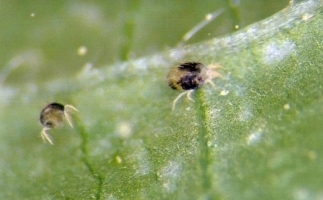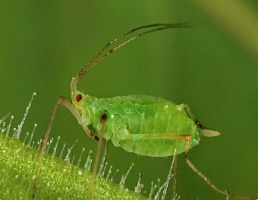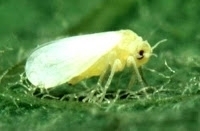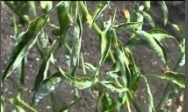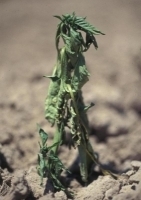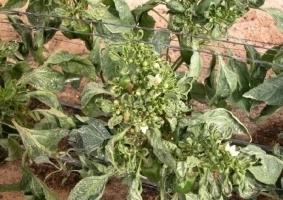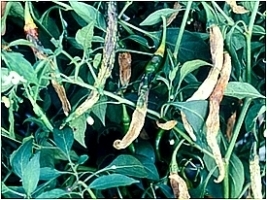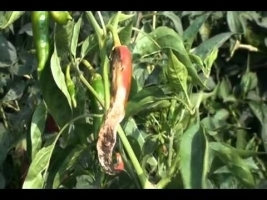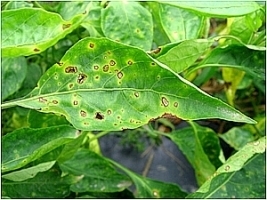Agnirekha: Cultivated for green chilly. Gives average yield of 105qtl per acre. Resistant to powdery mildew and wilt disease.
Jayanti: Medium tall variety and its fruits are green and on ripening turn to red. Gives average yield of 6-8qtl per acre (red chilli yield).
Byadgi (Kaddi): Mild flavor, long and bright red color variety. Variety having good storage capacity.
Phule Jyoti: Less susceptible to powdery mildew and resistant to sucking pest. Gives average yield of 83qtl per acre of green chillies and 12.5-14.5qtl of dried chillies.
Arka Lohit : Suitable for cultivation under irrigated as well as rainfed areas. Fruits are dark green color and turned into red on ripening. Gives average yield of 100qtl/acre.
Kiran: Light green, long, thin gives red color on ripening. It is resistant to sucking pest.
Pusa Jwala: Plants are dwarf, bushy, light green. Fruits are 9-10 cm long; light green, highly pungent, tolerant to thrips and mites. Average yield of 85qtl/acre (green) and 18qtl/acre (dry).
Pant C-1: This variety is easily distinguishable from the other varieties because it has upright fruiting pods. The pods are highly pungent, relatively small, broader at the base and narrow towards the tip. It is moderately resistant to mosaic and leaf curl virus. The green pod yield of this variety is 110qtl/acre. The dry pod yield is about 20qtl/acre.
Phule Sai: Gives red color after drying. Variety is medium spicy. Fairly resistant to blight.
Pusa Sadabahar: Plants are erect, perennial (2-3 years), 60-80cm tall, fruits are 6-8cm long, born in clusters with 6-14 fruits/cluster, ripe fruits dark red, highly pungent, resistant to CMV, TMV and leaf curl complex, first picking in 75-80 days after transplanting. It gives an average yield of 95qtl/acre (green) and 20qtl/acre (dry).
Kashi Early: Plants of are tall (100-110 cm height) without nodal pigmentation on dull green stems and bear pendant fruits. Fruits are long (8-9 x 1.0-1.2 cm), attractive, dark green and turn bright red at physiological maturity, pungent with smooth surface. First picking of the green fruits starts at about 45days after transplanting. Average yield of this hybrid is 100qtl/acre (red ripe).
G 5: Chilly is thick, glossy with deep red color. Gives average yield of 20qtl/acre of dried chillies.
G 3: Suitable for cultivation under rainfed and irrigated conditions. Chilly are having high pungency. Gives average yield of 16qtl/acre of dried chillies.
Private companies variety: Savitri, Volcano, Tapan, Green wonder and CCS 1
EllachipurSannam: Variety having red color fruits and hot in taste. It is popular variety of Amaravathi district.
Nagpur: Popular variety of Nagpur region. Fruits are red color with high pungency.
Nalchetti: Mostly grown in Nagpur region. Fruits are red in color with high pungency.
SangliSannam: Popular in Kolhapur district. Red color and hot variety.







